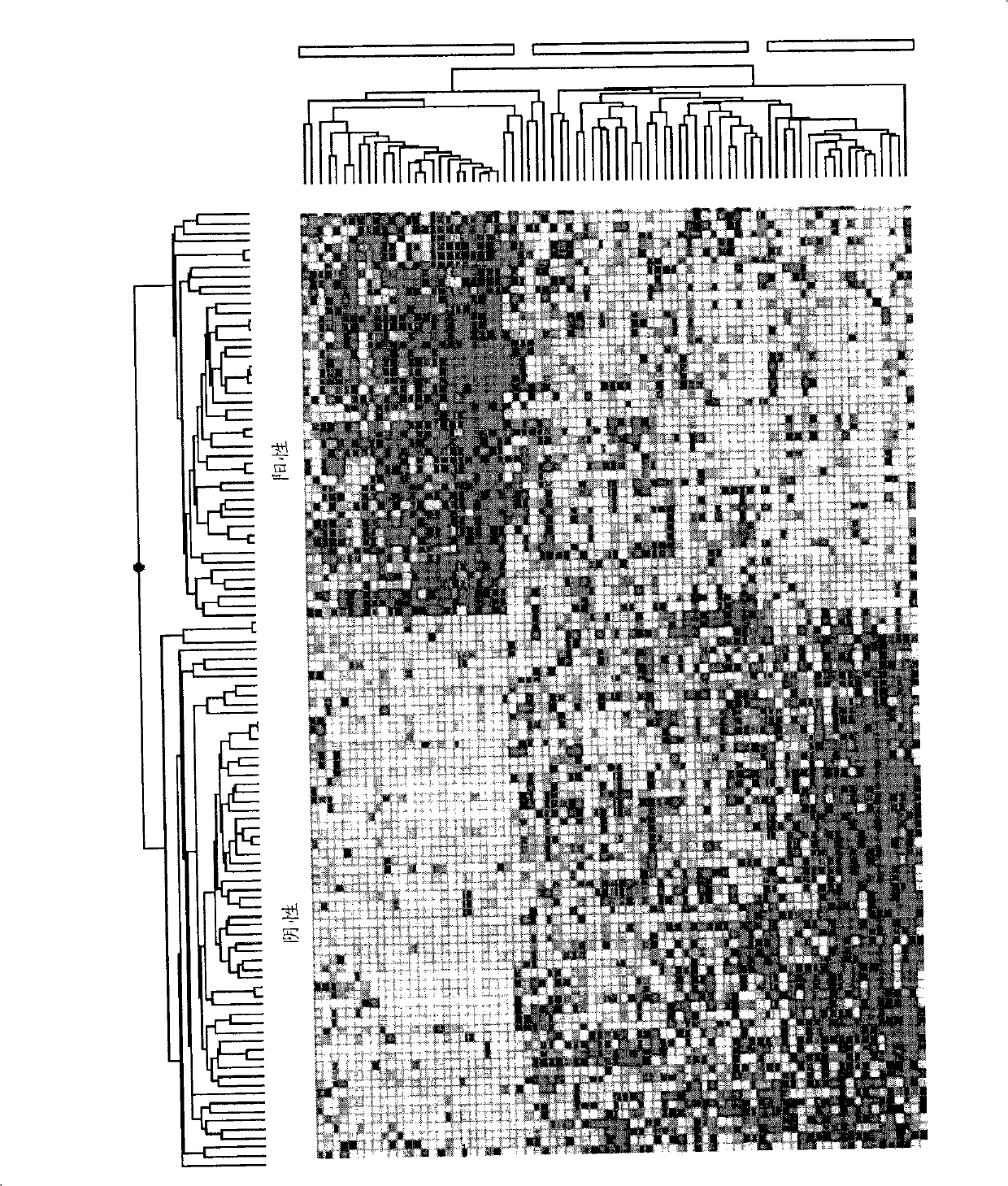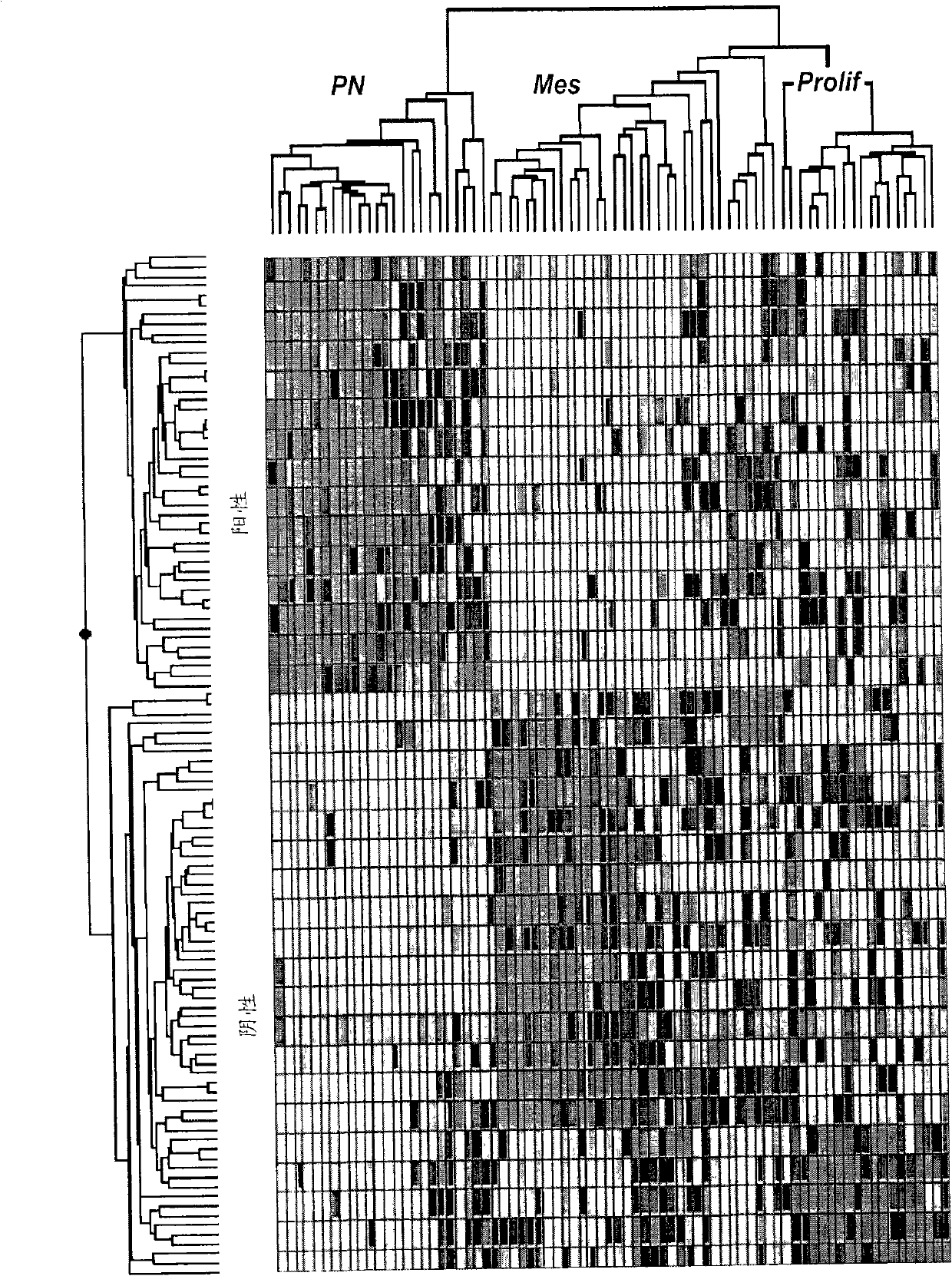Method for diagnosing, prognosing and treating glioma
A technology for glioma and therapy, applied in biochemical equipment and methods, anti-tumor drugs, pharmaceutical formulations, etc., to solve problems such as inability to reproduce findings
- Summary
- Abstract
- Description
- Claims
- Application Information
AI Technical Summary
Problems solved by technology
Method used
Image
Examples
preparation example Construction
[1153] Preparation of H.GDM polypeptide
[1154] The following description mainly relates to the production of GDM polypeptides by culturing cells transformed or transfected with vectors comprising nucleic acids encoding the antibodies, polypeptides and oligopeptides. It is of course contemplated that alternative methods known in the art may be employed to prepare the antibodies, polypeptides and oligopeptides. For example, solid-phase techniques can be used to generate suitable amino acid sequences, or portions thereof, by direct peptide synthesis (see, e.g., Stewart et al., Solid-Phase Peptide Synthesis, W.H. Freeman Co., San Francisco, CA (1969); Merrifield, J.Am. Chem. Soc., 85:2149-2154 (1963)). In vitro protein synthesis can be performed using manual techniques or automation. For example, automated synthesis can be accomplished using an Applied Biosystems Peptide Synthesizer (Foster City, CA) according to the manufacturer's instructions. Portions of the antibody, po...
Embodiment 1
[1250] Experimental protocol
[1251] Tumor samples and patient characteristics
[1252] Figure 8A A summary of all tumor cases studied is included in . For survival analysis, 3 expression profiling datasets were analyzed. We obtained frozen tissue samples from 76 cases of MDA, RNA from 39 cases of UCSF (Nigro et al., Cancer Res. 65:1678-1686 (2005), and data from a previously published study at UCLA (Freije et al., supra) Cases analyzed in the first two datasets met the following criteria: Fresh-frozen samples were obtained from patients (age >21 years) who had not previously received radiotherapy or chemotherapy at the time of initial surgical resection. At least 2 years after surgery or Clinical follow-up information was available until death. These retrospective laboratory studies in UCSF and MDA were approved by the Institutional Review Board / Human Subjects. Cases were graded as AA or GBM according to WHO criteria , and all tissue sections were examined by a neuropat...
Embodiment 2
[1300] Example 2: Microarray Analysis to Detect Upregulation of GDM Polypeptides in Cancerous Glioma Tumors
[1301] Nucleic acid microarrays, often containing thousands of gene sequences, can be used to identify genes that are differentially expressed in diseased tissues relative to their normal counterparts. Using nucleic acid microarrays, test and control mRNA samples from test and control tissue samples are reverse transcribed and labeled to generate cDNA probes. Then, the cDNA probes are hybridized to the nucleic acid array immobilized on the solid support. An array is set up such that the sequence and position of each member of the array is known. For example, genes known to be expressed in certain disease states can be selected and arrayed on a solid support. Hybridization of a labeled probe to a particular array member indicates that the sample from which the probe was derived expresses the gene. One or more genes overexpressed in disease tissue are identified if th...
PUM
 Login to View More
Login to View More Abstract
Description
Claims
Application Information
 Login to View More
Login to View More - R&D
- Intellectual Property
- Life Sciences
- Materials
- Tech Scout
- Unparalleled Data Quality
- Higher Quality Content
- 60% Fewer Hallucinations
Browse by: Latest US Patents, China's latest patents, Technical Efficacy Thesaurus, Application Domain, Technology Topic, Popular Technical Reports.
© 2025 PatSnap. All rights reserved.Legal|Privacy policy|Modern Slavery Act Transparency Statement|Sitemap|About US| Contact US: help@patsnap.com



